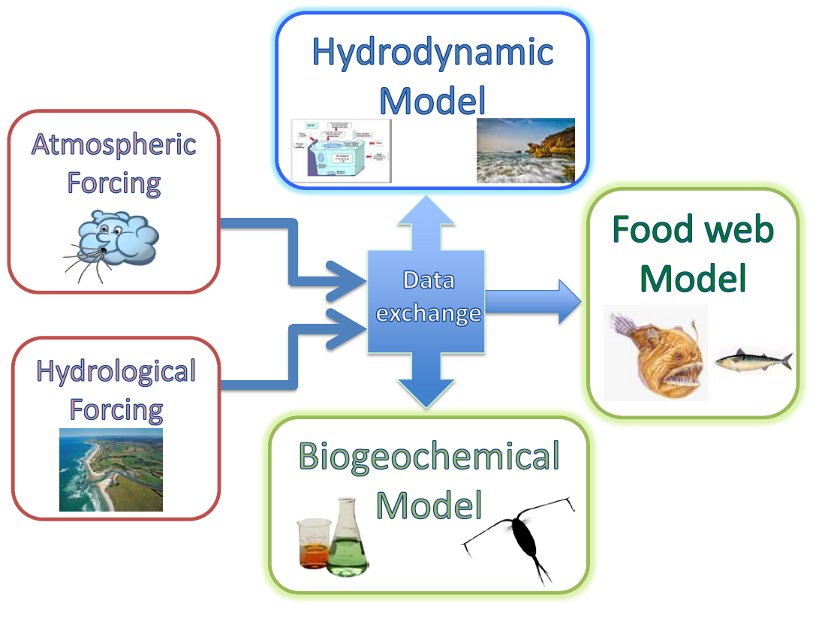MSFD Modelling Framework
Presentation of the Modelling Framework
Marine ecosystems are fundamental components of the Earth system, providing valuable ecosystems services such as climate regulation, food, energy and mineral resources, as well as cultural and recreational services. However, human activities have drastically changed the structure and functioning, as well as the health and productivity of deep oceans, coastal seas, lakes and rivers. These are severely at risk due to climate change, overexploitation, ocean acidification, deoxygenation, excess nutrients, chemical pollutants and plastics. The combination of all these anthropogenic-induced effects is substantially altering the marine ecosystems and the provision of ecosystem services. Hence, the maintenance and preservation of marine ecosystems are core elements of major international policies In this context, the United Nations has launched the 'Decade of Ocean Science for Sustainable Development (2021–2030)' to tackle the challenges in ensuring a sustainable and rational use of natural resources. Objectives, key areas for action and problems to be tackled in this decade are closely aligned with the overarching challenges defined in the UN Sustainable Development Goals (SDGs; in particular SDG#14 Conserve and sustainably use the oceans, seas and marine resources). Clean and healthy seas are also a central pillar of the European guiding principles permeating into multiple aspects of the current European Green Deal (European Commission, 2019). At the same time, they are also specifically addressed in several EU policy drivers, such as the Marine Strategy Framework Directive (MSFD; Commission of the European Communities (2008), the Common Fisheries Policy (CFP; Regulation (EU) No 1380/2013), the Blue Growth Strategy (EC, 2012) or the Blue Economy Strategy (EC, 2014). Many threats to marine ecosystems are well known, such as the accumulation of pollutants (e.g., plastics or hazardous chemical substances) or overfishing. Reducing harmful human impacts and aiming to achieve, restore or obtain 'Good Environmental Status' (GES) in all (European) marine waters is the major goal of the MSFD. Marine models can be useful for a number of purposes related to the Marine Strategy Framework Directive (MSFD), such as to determine baseline conditions from the past, estimate the future impact of pressures and the suitability of measures, complement scarce datasets and help prioritise sampling activities. On request from DG Environment (~2013) and in continued collaboration between JRC and DG ENV the development of a marine modelling framework at JRC was initiated. The modelling framework proposes end-to-end modelling which aims to represent large parts of the marine ecosystem by including the most relevant processes in the system, from physics to chemistry, and plankton to fish. This system is explicitly linked to descriptors of the MSFD. To achieve this objective, four types of models are incorporated into a single modelling framework/toolbox:
The models considered will be aligned for comparison with policies, i.e. hydrological models with the Water Framework Directive (WFD), higher-trophic-level food-web models with Biodiversity policies, and Lagrangian transport models with Plastics Directive. |
 |